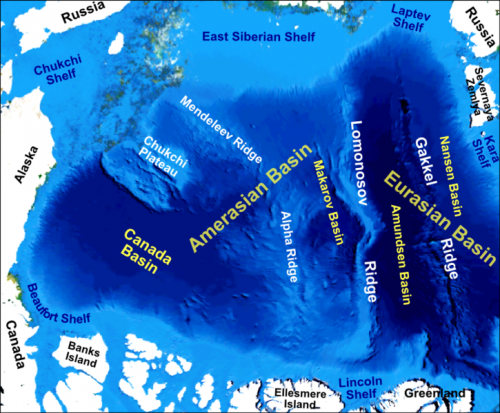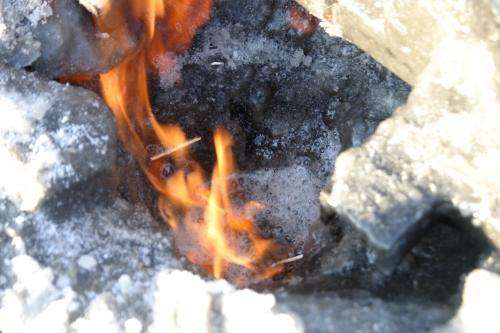November 25, 2013 report
Researchers find significant amount of methane escaping East Siberian Arctic Shelf

(Phys.org) —A combined team of U.S. and Russian researchers has found that large amounts of methane are bubbling up from the subsea permafrost along the East Siberian Shelf. In their paper published in the journal Nature Geoscience, the team describes research they've conducted over several years from fishing vessels in the Laptev Sea and other areas along the shelf along with the results of measurements they've made.
North of Russia lies the Arctic Ocean, over time, parts of it have been given different names—one of those the Laptev Sea, lies north of Siberia, and is bounded by peninsulas on both sides. The sea normally freezes in the winter and thaws in the summer, but the water remains so cold that the seafloor has, at least until recent years, remained frozen. The researchers in this latest effort have been monitoring the amount of methane released into the sea as the subsea permafrost melts in the summer.
The melting of the subsea permafrost in the Arctic Ocean can't be blamed on modern humans—it's been slowly warming down there for thousands of years—it's just recently however, reached the point where it melts in the summer just enough to allow the methane in it to seep out and bubble up into the sea column above. The researchers have been seeing record levels of methane in the both seawater and permafrost core samples they've been collecting over the past several years (they also use sonar to measure the density of bubbles emanating into the seawater). Worse, they have found that methane levels drop dramatically during storms. This means, the researchers report, that all that methane in the seawater is whipped into the atmosphere, adding to the other greenhouse gasses that are contributing to global warming.
The researchers note that their measurements contradict predictions by others that a massive "pulse" of methane will very soon add as much as 50 billion tonnes of methane to the atmosphere, causing a dramatic spike in global air temperatures. Instead, they suggest, it appears more likely that the methane will continue to bubble up slowly, contributing to greenhouse gases much as is happening currently—though they do caution that its possible global warming could cause more or bigger storms in the Arctic Ocean, releasing methane on a bigger scale.

More information: Ebullition and storm-induced methane release from the East Siberian Arctic Shelf, Nature Geoscience (2013) DOI: 10.1038/ngeo2007
Abstract
Vast quantities of carbon are stored in shallow Arctic reservoirs, such as submarine and terrestrial permafrost. Submarine permafrost on the East Siberian Arctic Shelf started warming in the early Holocene, several thousand years ago. However, the present state of the permafrost in this region is uncertain. Here, we present data on the temperature of submarine permafrost on the East Siberian Arctic Shelf using measurements collected from a sediment core, together with sonar-derived observations of bubble flux and measurements of seawater methane levels taken from the same region. The temperature of the sediment core ranged from −1.8 to 0 °C. Although the surface layer exhibited the lowest temperatures, it was entirely unfrozen, owing to significant concentrations of salt. On the basis of the sonar data, we estimate that bubbles escaping the partially thawed permafrost inject 100–630 mg methane m−2 d−1 into the overlying water column. We further show that water-column methane levels had dropped significantly following the passage of two storms. We suggest that significant quantities of methane are escaping the East Siberian Shelf as a result of the degradation of submarine permafrost over thousands of years. We suggest that bubbles and storms facilitate the flux of this methane to the overlying ocean and atmosphere, respectively.
Journal information: Nature Geoscience
© 2013 Phys.org

















